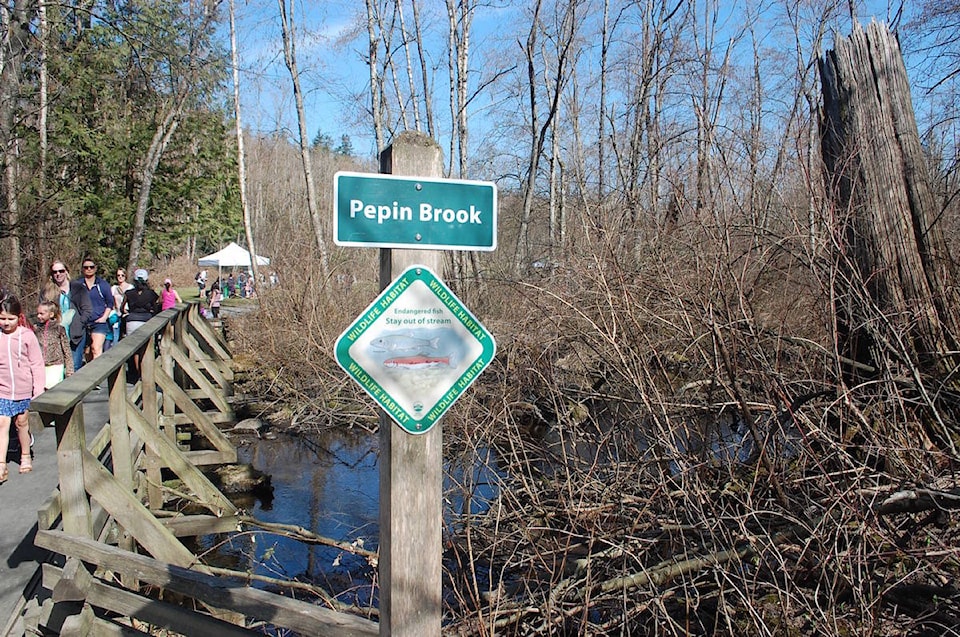In 2011, Aldergrove residents first noticed their man-made pool – a swimming destination in which so many fond family memories were made – had been filled-in.
Eight years later, Park Planner Lydia Mynott still reports seeing hopeful swimmers turn up on the now Aldergrove Regional Park property with dinghies-in-hand.
“There is a real sense of public loss,” Mynott said, “it was a place embedded in so many childhood memories.”
The covering of the lake was a “board-approved decision,” Mynott said, “it was no longer safe and realistic to operate. There were serious environmental risks due to the structure being next to a sensitive habitat.”
Pepin Brook – hosts endangered fish including the Salish Sucker and Nooksack Dace and is part of a larger ecosystem that flows south beside the former lake.
“We were continually having to use chlorine to keep the water clean. This can cause public and ecosystem health issues,” said Vanessa Lee, who works as a parks interpretation specialist for the parks system.
Metro Vancouver Regional Parks “grandfathered the property” from an owner who operated the lake as a part of a private, commercial campground beginning in the 1960’s, according to Mynott.
“If there was any sort of accident we wouldn’t want chlorine to get into their ecosystem,” Lee emphasized, hinting that such an effect could have been deadly.
READ MORE: Former Aldergrove ‘lake’ to be used for hiking, picnics and education
After the lake’s closure, the regional parks system conducted a public engagement campaign to garner responses from locals as to what what they hoped to see in place of the man-made structure.
The initiative was a catalyst for what currently sits in place of the lake – a Nature Discovery area, which utilizes the park’s natural habitats to educate visitors of all ages.
The area is a part of a $4 million Aldergrove Regional Park Management Plan, which the park’s board of directors first approved on July 26, 2013. It includes proposed park enhancements over a 20-year span.
“Recreation has became less of a mandate for Metro Vancouver Regional Parks. Now, our mission is to protect the natural ecosystems and connect people with them,” Mynott finished.
The area is a place for parents to learn and play with their children and cultivate a love for living things, Mynott said.
The 280-hectare park on the Canada-US border (the main entrance to the park is located on 8 Avenue just east of 272 Street) and attracts hundreds of thousands of visitors each year.
